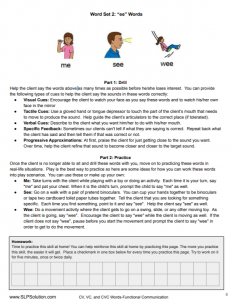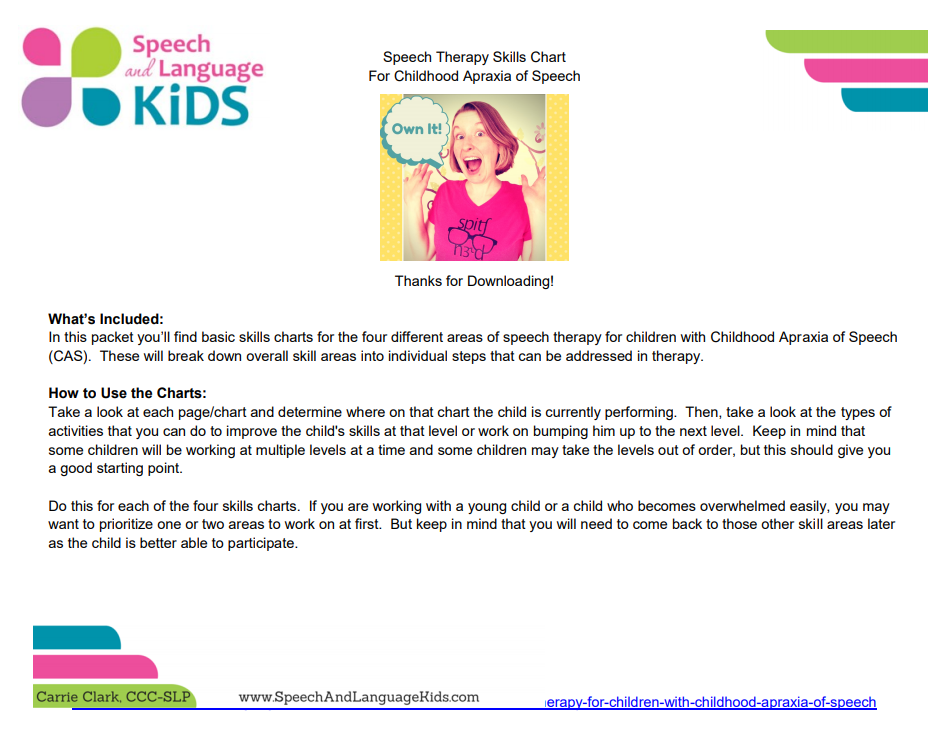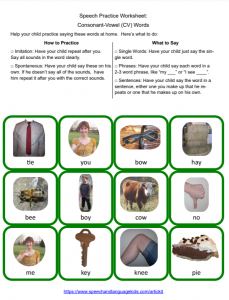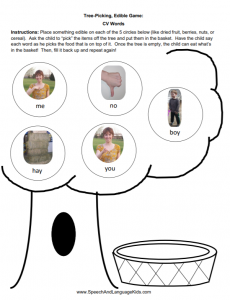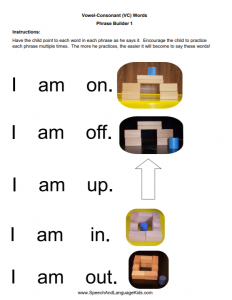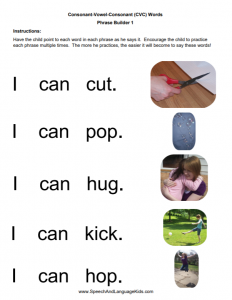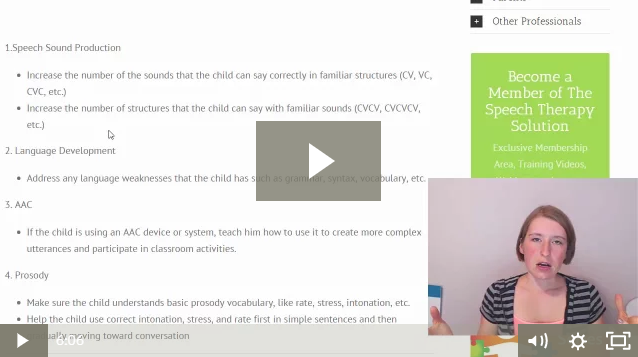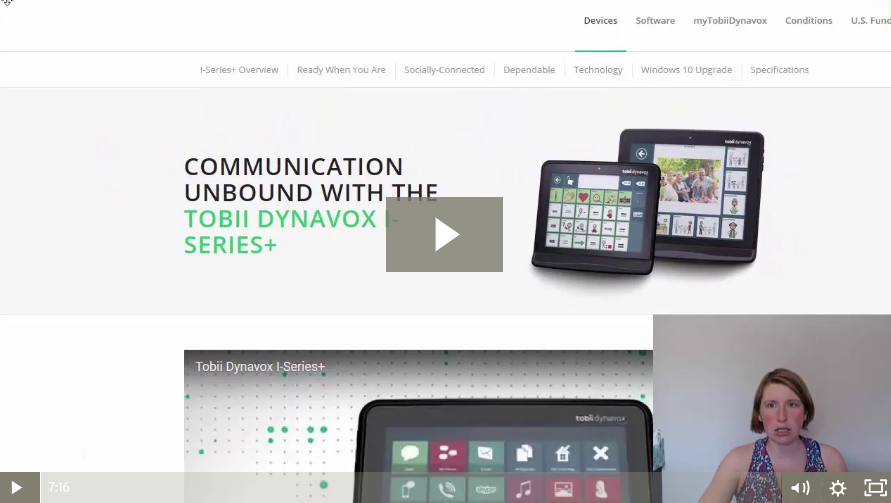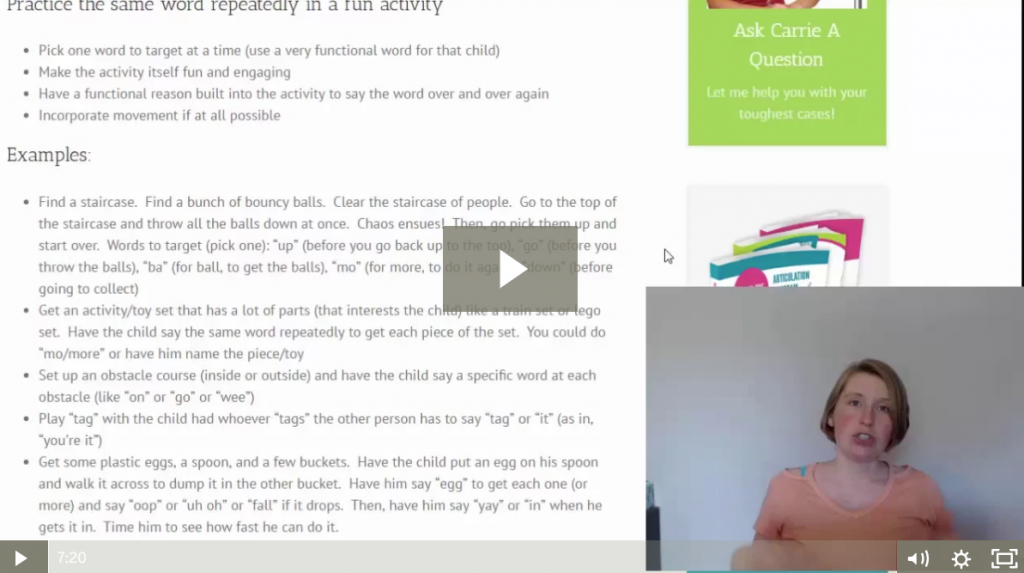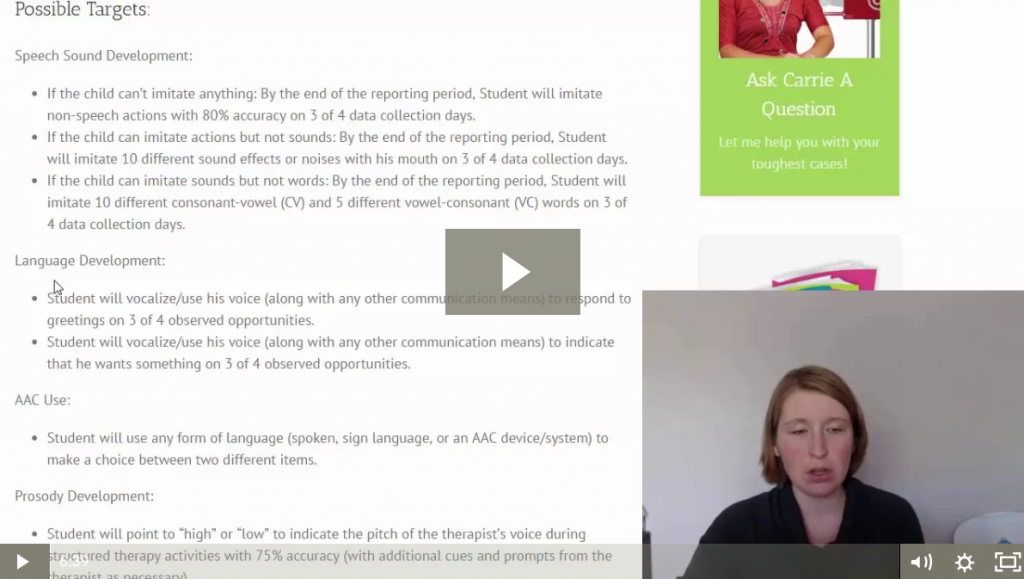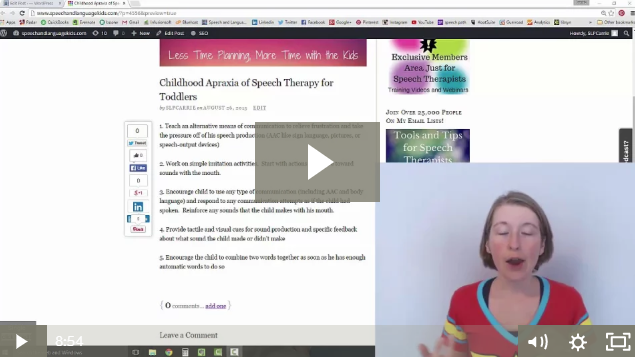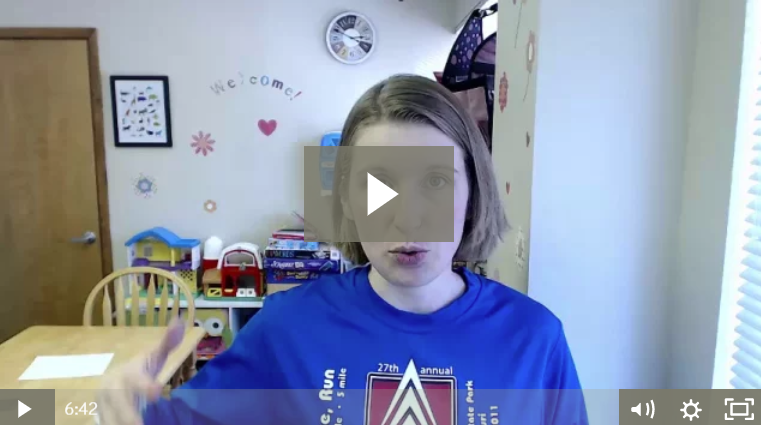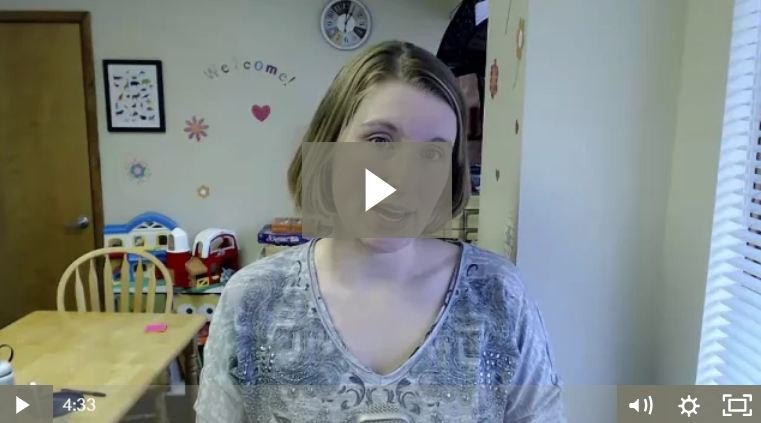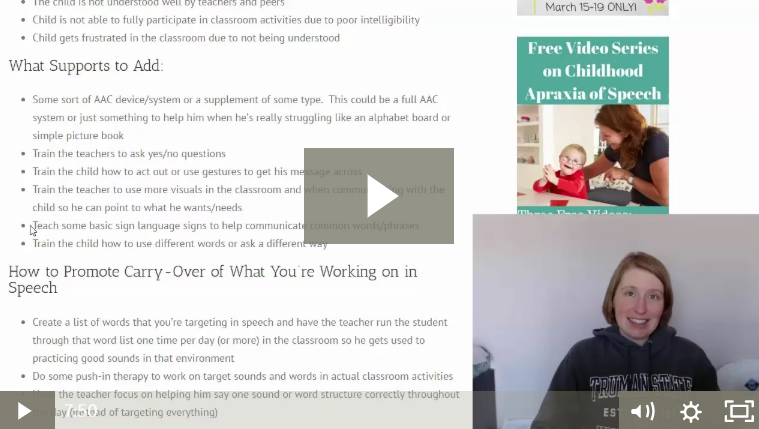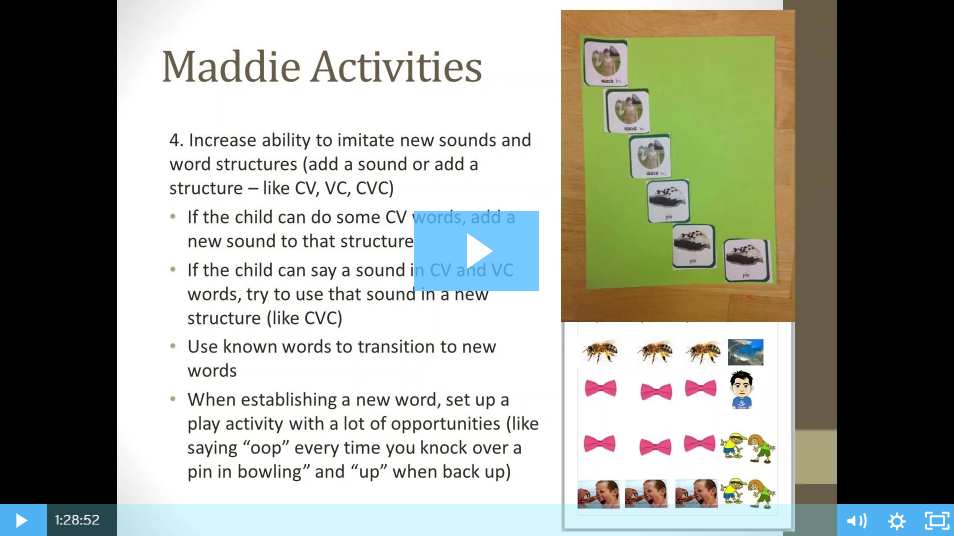Goal: Produce CV, VC, and CVC Words for Functional Communication
Sample Goal:
During a 10-minute activity, Client will spontaneously produce at least 10 CV, VC, or CVC words with verbal prompting as needed.
Download the No-Prep Therapy Kit:
We have a start-to-finish therapy kit that will give you everything you need to practice this skill in therapy and send home homework. Click the packet below to open it. Then, print it out and place it in the child’s notebook or binder.
Therapy Phases:
- Imitate Actions: In order to improve ability to imitate speech sounds, Client will imitate gross-motor and fine-motor actions on at least 80% of observed opportunities. (THIS PHASE IS ONLY USED IF THE CHILD IS NOT YET ABLE TO IMITATE SOUNDS)
- Imitate Sound Effects: In order to improve ability to imitate speech sounds, Client will imitate sound effects on at least 80% of observed opportunities. (THIS PHASE IS ONLY USED IF THE CHILD IS NOT YET ABLE TO IMITATE SPEECH SOUNDS)
- Imitate Speech Sounds: Client will imitate speech sounds in isolation on at least 80% of observed opportunities (age-appropriate sound substitutions are allowed).
- CV, VC, and CVC Words: Client will imitate a variety of consonant-vowel (CV) and vowel-consonant (VC) functional words on at least 80% of observed opportunities (age-appropriate sound substitutions are allowed). During a 10-minute activity, Client will spontaneously produce at least 10 CV, VC, or CVC words with verbal prompting as needed.
What’s Next?
- As soon as the child begins to start saying CV, VC, and CVC words, you should begin to encourage the child to use those words in 2-word utterances. Children with CAS benefit from additional practice with sequencing sounds and words together into longer utterances.
What is Childhood Apraxia of Speech?
- Inconsistent errors on consonants and vowels in repeated productions of syllables or words(meaning that if the child says the same word many times, it may sound differently each time)
- Lengthened and disrupted coarticulatory transitions (meaning that the child’s speech sounds choppy or disconnected due to trouble transitioning between sounds or between words in older children)
- Inappropriate prosody, especially in the realization of lexical or phrasal stress between sounds and syllables (meaning that the rhythm, intonation, and stress of speech may sound off, the child may sound robotic, have incorrect phrasing, or stress the wrong words or syllables)
Supplemental Materials
Here are some other resources that may help you when working on this skill:
Speech Therapy Skills Chart for Childhood Apraxia of Speech (CAS)
Are you having trouble figuring out what to work on with a child with childhood apraxia of speech (CAS)? Use these skill charts to generate ideas of what to work on based on the child’s current level of 4 different skills (speech, language, AAC, and prosody). These charts are designed as starting places to get you going but should be tweaked and adapted to each individual child that you work with.
Need help figuring out which functional words to target first? Take a look at this list of great first words to begin with for therapy. We’ve even broken it down by word structure (like CV, VC, and CVC).
Additional practice items with photos of words for the CV, VC, and CVC word structures. These are great extra worksheets if you need more items to practice.
Edible Articulation Game: CV, VC, CVC Words
Fun tree-picking activity gives you even more CV, VC, and CVC words to practice. Just place a small food item on each one and keep your clients motivated with some edible reinforcement!
Once your client is able to produce CV and VC words in isolation, it’s time to start putting them together in phrases. Children with CAS benefit from moving to this phrase level as quickly as possible. Here’s a great worksheet to get you started.
This phrase builder will help your clients start to combine CVC words once they have begun to master them in isolation.
Training Videos:
Need some extra help on treating this skill? Check out these related training videos:
Webinar Recordings:
If you need some in-depth information related to this skill, check out our related webinar recording(s):
Let’s Get Talking With Apraxia
Therapy Ideas for Non-Verbal Children up through 3-Word Utterances
The Four Components of Therapy for Children with CAS
Therapy ideas for all aspects of working with children with CAS, including AAC, language, and prosody.

